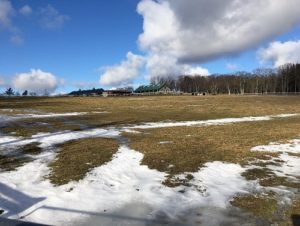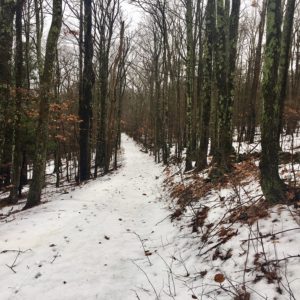Conservation Easements: The Top Tax Tool in the Farmer’s Estate Planning Toolbox
by John H. Lavelle
Most farmers have a substantial real estate portfolio. Depending on the geographic region, this can be extraordinarily valuable, but in every case, land is always a critical asset for the succession of the farm business to future generations. In many cases, the value of the land is also a planned retirement asset for the senior generation of farmers. These two ideas, critical asset and retirement asset, often combine to doom family farms that do not plan for the future.
Conservation easements can often save the day for families struggling with the transition of farm businesses to the next generation. But what exactly are these, and how can they work for the typical farm situation? This short article is designed to raise farmers’ and planners’ awareness of how this powerful tool can solve otherwise intractable conflicts over the role of land in the estate plan.
Cash Out Without Selling?
For the lucky few, a conservation easement can facilitate a large payment to the senior generation farmers, while keeping the farm in the family. For farmers whose land is very valuable as a conservation asset, they can get paid for agreeing to restrict their land to agricultural uses indefinitely. Generally known as a “purchase of development rights” or PDR, this technique trades cash for the creation of a conservation easement.
Where does the cash come from? State and federal funding programs, as well as private land trust funders, devote money from time to time to conserve farmland. This money is scarce, and changes according to government budgets every year, but it is possible for the best land to qualify for these programs. Ordinary farms need not apply, but in high growth areas or very special conservation areas, farmland may be eligible. If you join the queue early and often enough, every year someone is approved.
So what happens? The farmer agrees to restrict the land to its current uses (i.e. agricultural, open space, woodlands, etc.) with perhaps some limited development areas needed for farm expansion. The land is appraised before and after the proposed restrictions, and the decrease in value is how the PDR is computed. Some program or combination of programs might pay the farmer 100% of that value, while others might be less than that. For most farmers, cash received in a PDR transaction will be taxed as a capital gain.
If you are lucky enough to get a PDR, it can solve the senior generation retirement income problem. At the same time, it lowers the value of the farm for the purpose of transferring it to the next generation. In addition, certain tax benefits might be available, discussed below.
Tax Planning with Conservation Easements
For very successful farms and large landholdings that are not farms, a conservation easement presents many tax planning benefits. The vast majority of conservation easements are donated in full or part and are not sold as in the PDR situation above. In exchange for donating or giving up the development rights, very powerful tax benefits are available.
These tax benefits for high bracket taxpayers can sometimes make the difference between retaining legacy farms, vacation properties, and forest lands, and needing to sell them to plan for estate taxes or to otherwise work out estate planning issues. Here is a quick summary of the possible tax benefits when a PDR is not available (which is most of the time):
Income tax deduction. For high earning farmers and wealthy landowners, a charitable income tax deduction is awarded for simply agreeing to restrict the land under a conservation easement. In many cases, the government gives you this benefit even though it is what you want for the land anyway. The deduction is equal to the difference between unrestricted land and the value after the restrictions. Your use of the deduction depends on your individual tax situation. For qualified farmers, this “paper” deduction can completely offset the tax on your income for up to fifteen years. In addition, New York has a conservation easement tax credit granting New York donors a refundable income tax credit of 25% of their school and property taxes paid during the year (maximum credit is $5,000).
Estate tax benefits. First off, whether you believe the estate tax will still be around or not (it just celebrated 100 years in 2016), getting benefits for something you would do anyway still makes sense. The conservation easement lowers the value of the land for gift and estate tax purposes. This means more land can be transferred within today’s large exemptions from the gift and estate tax than without the easement.
Secondly, an additional 40% off the value of the encumbered land, up to $500,000, is available at the death of the landholder(s). None of these benefits cost a single dollar (other than the cost of doing the easement, of course). So, the easement provides lower value to begin with, and 40% on top of that in many cases. The more significant the impact of the easement, the more likely the landholder will get the full 40% reduction. Farmers in high growth areas usually qualify for the maximum benefits.
Summary
Conservation easements have a long lead time. It might take years to get a PDR. For a full or partially donated easement, a year is the minimum amount of time. Qualified appraisers are needed for the before and after valuations, which drive the purchase price in PDRs and the tax benefits for donated easements. Legal documents are involved and a land trust or government agency is a key partner.
However, the benefits are substantial, and farmers and other landowners should be alert to this opportunity. Together with professional advisers familiar with the technique, farm families can greatly benefit their own estate planning when this tool fits the situation.
John H. Lavelle, CPA, LL.M., is a founding partner of Lavelle & Finn, LLP, Attorneys at Law, in Latham, NY and co-owner of Windhorse Thoroughbreds and Cotton Hill Farm in Middleburgh, NY. He can be reached at (518) 869-6227 or john@lavelleandfinn.com.



